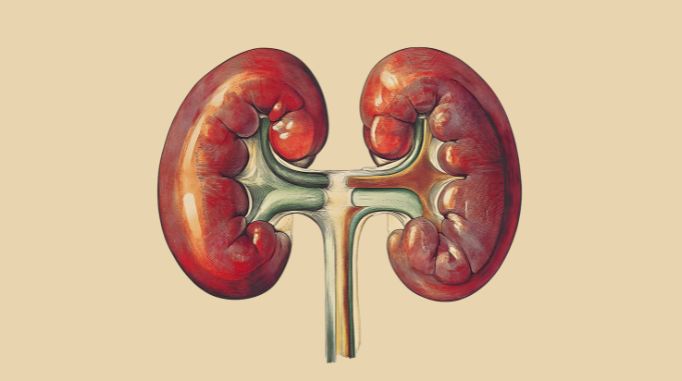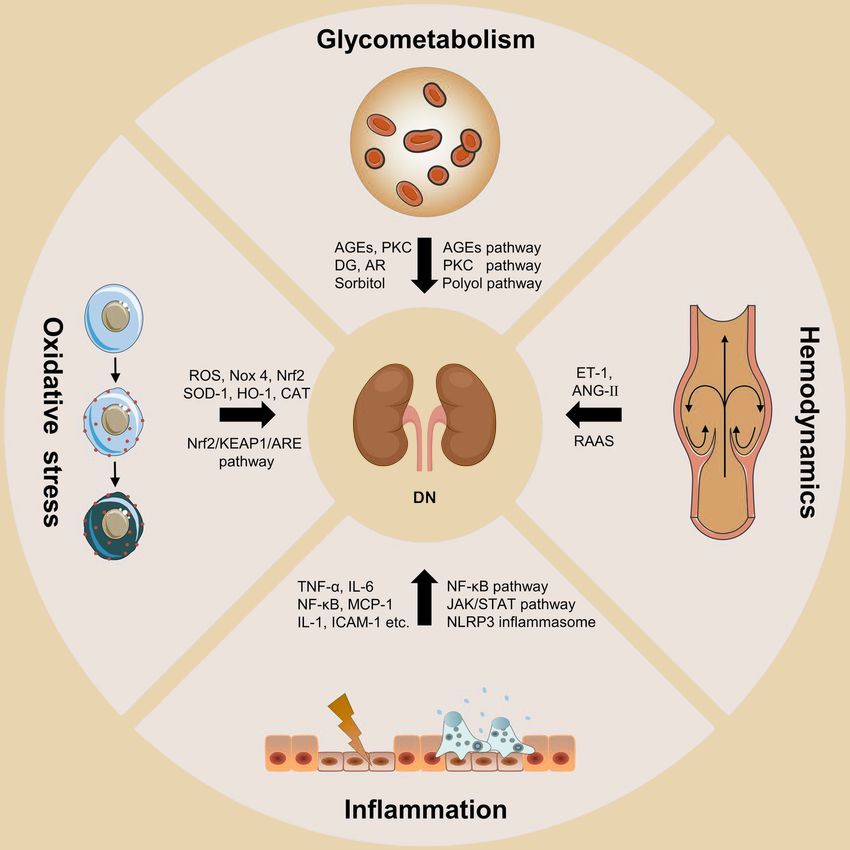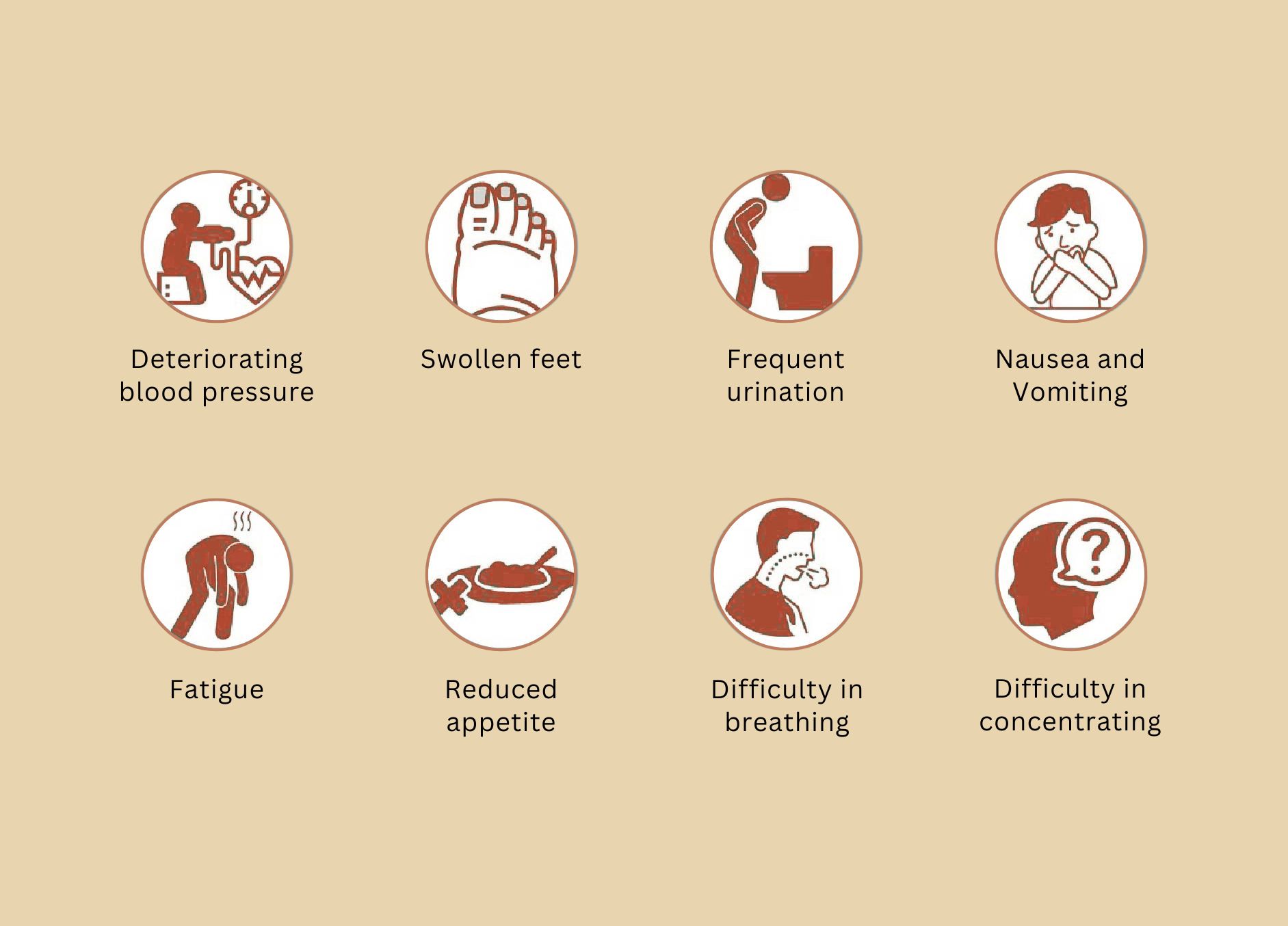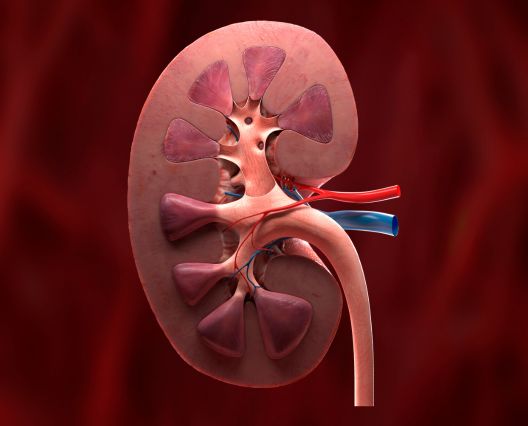Diabetic Nephropathy
Nephrotic syndrome is a kidney condition where too much protein leaks into the urine (proteinuria) due to damage in the kidney’s filtering units. This damage makes it difficult for the kidneys to retain essential proteins in the blood. It is not an inflammatory or autoimmune disease but results from structural changes in the kidney’s filtration barrier. The condition can affect both children and adults, often requiring medical attention for proper management.

Risk factors of of Diabetic Nephropathy

1. Glycometabolism
Abnormal glucose metabolism leads to the accumulation of AGEs (advanced glycation end-products), activation of PKC, and the polyol pathway, which together cause kidney cell damage and dysfunction.
2. Hemodynamics
Altered blood flow and pressure regulation through RAAS (renin–angiotensin–aldosterone system) and vasoactive substances like ET-1 and ANG-II contribute to kidney injury by increasing intraglomerular pressure.
3. Oxidative Stress
Excessive ROS (reactive oxygen species) production damages kidney tissues. Dysregulation of antioxidant defense pathways like Nrf2/KEAP1/ARE worsens oxidative injury.
4. Inflammation
Chronic inflammation involving TNF-α, IL-6, IL-1, MCP-1 and pathways like NF-κB, JAK/STAT, NLRP3 inflammasome accelerates kidney tissue damage and fibrosis.
Symptoms of Diabetic Nephropathy

Limitations of Medication Therapy

Corticosteroids: Often the first line of treatment, especially in children.
Limitations: Approximately 5–15% of patients do not achieve complete remission, indicating steroid resistance. Long-term use can also lead to side effects such as growth retardation in children, weight gain, hypertension, and increased infection risk.
Immunosuppressive Agents: Drugs like cyclophosphamide, cyclosporine, and mycophenolate mofetil are used, particularly in steroid-resistant cases.
Limitations: Their efficacy varies, and they can cause significant side effects, including increased susceptibility to infections and potential toxicity to organs like the kidneys and liver.
Book an Appointment Today
Contact Us
Phone number:
+91 6379926961
Location:
Racecourse, Coimbatore, 641018
Email:
support@namashivayah.com









